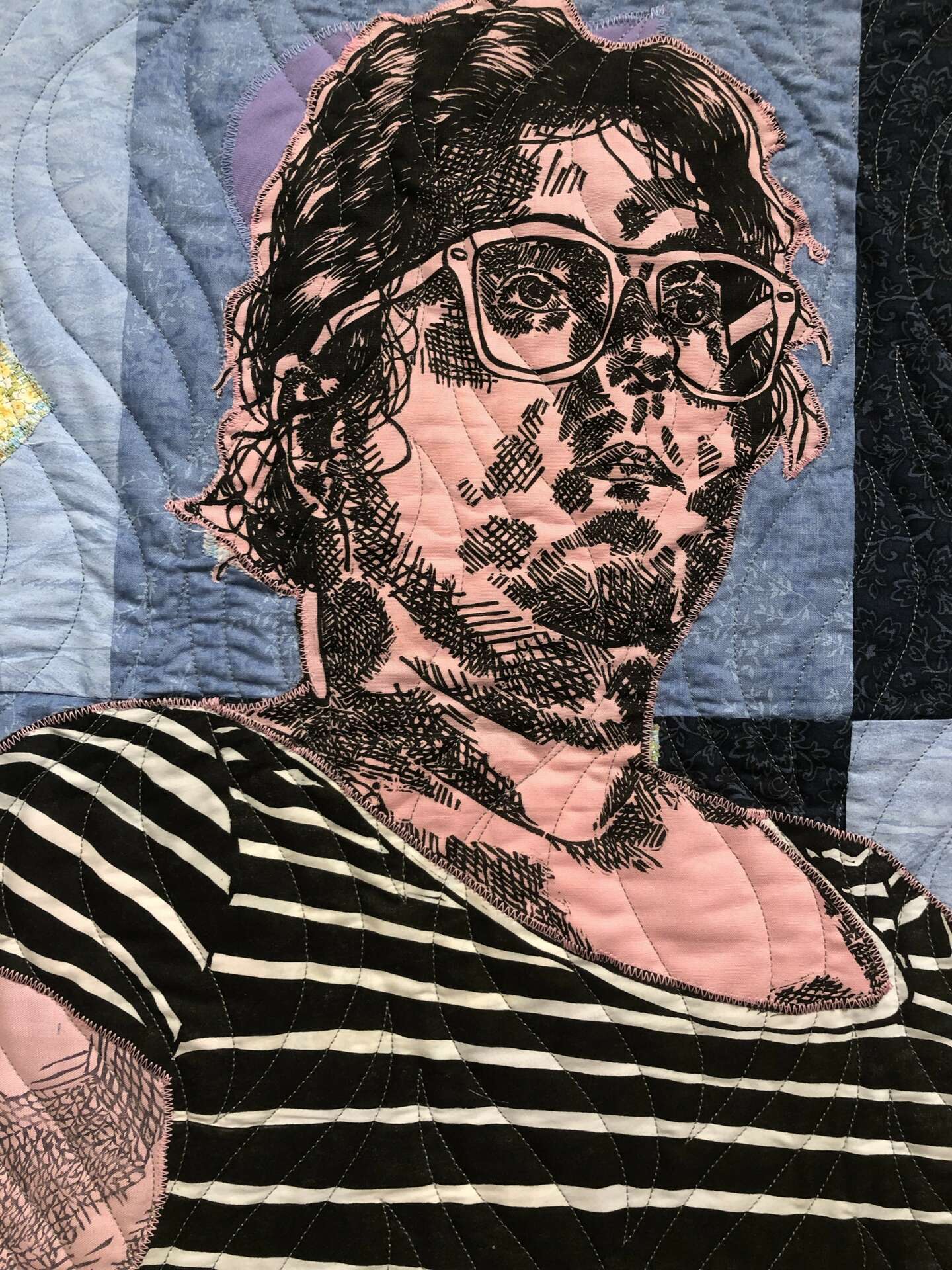We’re excited to introduce you to the always interesting and insightful Stephanie Alaniz. We hope you’ll enjoy our conversation with Stephanie below.
Stephanie, looking forward to hearing all of your stories today. We’d love to hear about a project that you’ve worked on that’s meant a lot to you.
My most recent body of work titles “Taking Up Space” aka “Fat Quilts” is incredibly significant to me. Through this work I am spot lighting fat individuals and celebrating them. This is something that never happens as we exist in anti-fat society and based on research through a Harvard University study, 4 out of 5 people harbor strong opinions against fat people. Spaces are not created with us in mind, people treat us cruelly, and our private health history is demanded from strangers.
I had the incredible opportunity to exhibit this work this past year at four different venues, the first being at Wichita State University. While here I had the oppurtunity to discuss the artwork via a one hour lecture that I gave in person. During this, I presented so much information and academic studies that showed how fat people are mistreated and the statistics that prove that anti-fat bias has roots in racism, it also is deadly because doctors often misdiagnose or ignore illnesses of fat people prescribing weightloss as a cure all, even when weight is unrelated. At the end of my lecture, I was in the gallery and approached by a mother and her two small children. She demanded that I tell her what I do for exercise, what I eat, my bloodwork, etc. I was taken back by this as this isn’t something I have yet to experience, as a small to mid fat person. I explained that that personal information is not okay to ask me for, you wouldn’t ask anyone else to prove their health to you. Alternatively, my health has no affect on her. What I eat, how active I am, my physical abilities to exercise, none of that is relevant to her life. And it shouldn’t be how she choses to treat me. There are countless reasons why people are fat, but again this is not your problem and shouldn’t be a reason to mistreat someone.
So my point overall is, someone’s size isn’t anyones business but their own and who they choose to share this with. It is not a moral issue, and you shouldn’t need someone to justify this in order to treat them like a person, with kindness and respect.
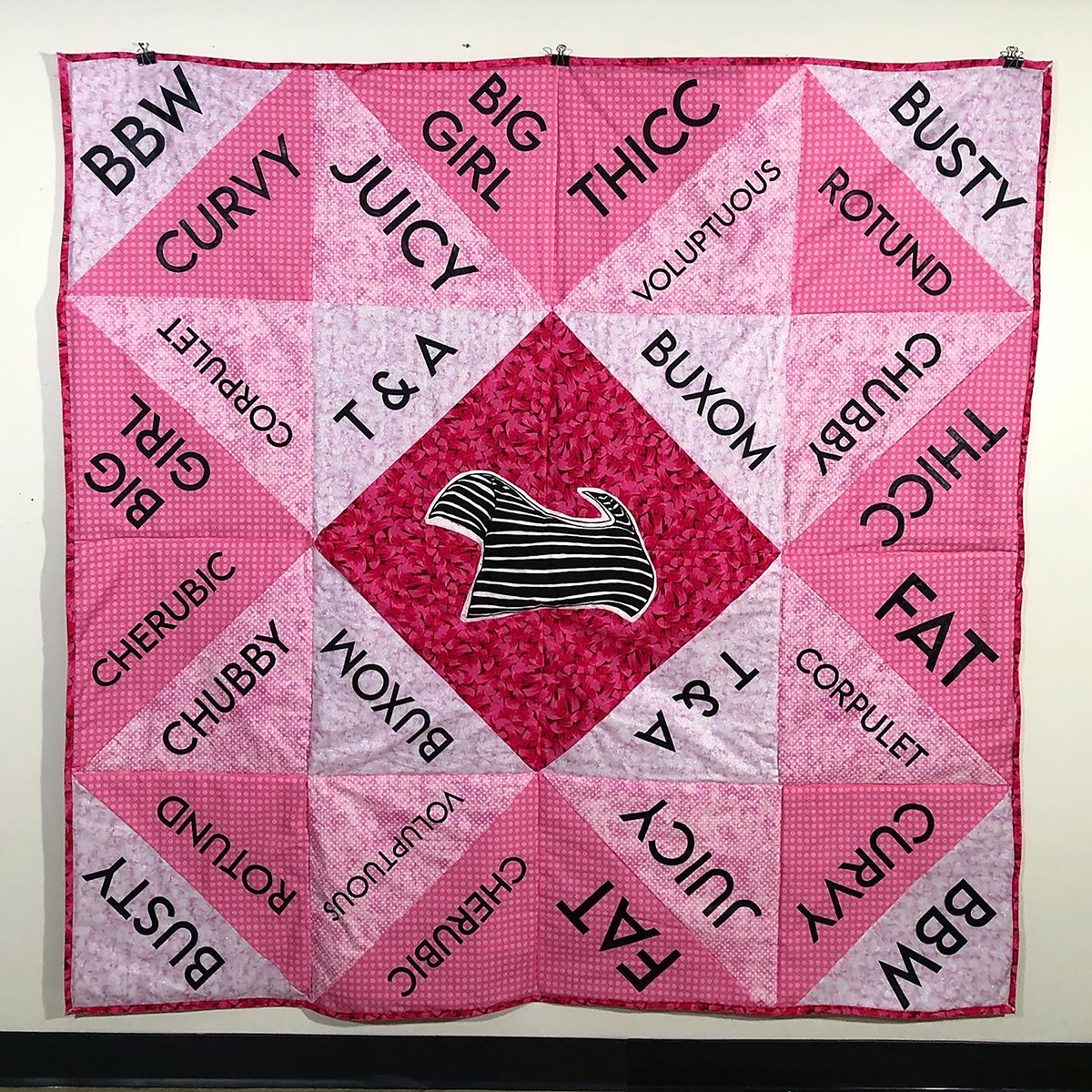

Great, appreciate you sharing that with us. Before we ask you to share more of your insights, can you take a moment to introduce yourself and how you got to where you are today to our readers.
My name is Stephanie Alaniz, I am a printmaker, artist, and quilter that is originally from the coastal bend of South Texas. I received my Bachelor of Fine Arts in Printmaking in 2016 from Texas A&M-Corpus Christi and then moved to West Virginia to attend West Virginia University where I received my Master of Fine Arts in Printmaking in 2019.
My origin story is that I have been drawing since I could remember, it has always been something I have been pulled towards and I was lucky enough to receive a lot of encouragement from the adults around me. I then went to college, where I took my first printmaking class which I had no idea what printmaking even was. I was OBSESSED. I loved that you could create an original piece of artwork traditionally and that it would exist in original multiples. Not only that, the community that comes with printmaking is incredible. They are so kind and generous and willing to help anyone by providing knowledge about process/problem solving printmaking issues. I felt like I had finally found my people! I then attended Frogman’s Print Workshop in South Dakota in 2014 and met so many artists that I am still close with to this day!
Attending WVU was pivotal in my works journey as I met one of my best friends, Luca Taylor, who opened my eyes to fat activism and claiming my own fatness, loudly and proudly! This led me to research and attempt to debunk the anti-fat bias that claims our entire society and beyond. I started a series that was called “Insecurity Portraits” which became my MFA thesis. Through this work I would ask the public to participate by providing a photograph of their face at rest and then a list of insecurities they associate with their physical face and a list of positives they associate with their physical face. Through this, I would render in black colored pencil the insecurities they listed, color for the positive using optical color mixing, and un-rendered areas were meant to represent places of indifference. Presenting this work together, we can begin to see how there are constants throughout and if there are areas that are listed by lots of people we can observe this as a socially learned insecurity or positive. For example, if many of the participants listed wrinkles, this would be because of our social understanding that being “old” is bad, also referred to as ageism. Knowing this, we can decide if we actually feel insecure about this or if it’s just something you were taught and challenge our experience with this insecurity further.
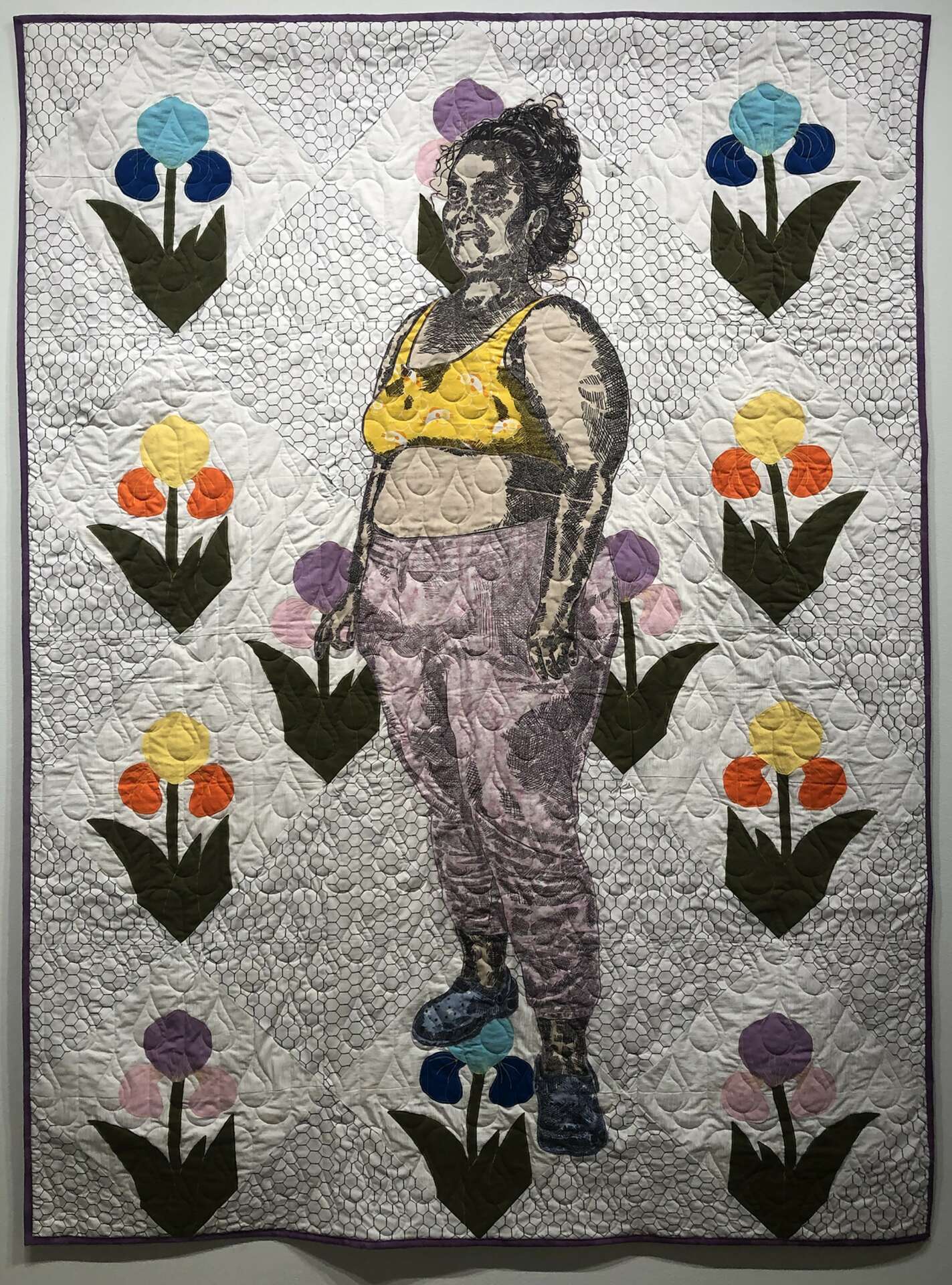

Is there something you think non-creatives will struggle to understand about your journey as a creative? Maybe you can provide some insight – you never know who might benefit from the enlightenment.
So many people in my life are non-creatives and I think universally something they struggle with is thinking they aren’t allowed to have a perspective because they are not “creative”, but I disagree! Art is made to be reflected on, to give us a chance to sit and think about something maybe we haven’t sat and thought about or see someone elses take on the thing. There are no wrong answers! Trust your gut! You know what you like and why you like it, and if you don’t just sit with some art and reflect on why you like that specific art, or don’t like a specific piece of art!
I also want to challenge the idea that you aren’t “creative”. Creativity looks like a lot of things, the best example of creativity I can think of is problem-solving. If you have problem-solving skills, you are creative. You are in a complicated situation that has lots of issues or popped on unexpectedly and now you have to find a solution to this problem. That is creativity! This is only one example or creativity outside of art or craft. Think about ways that challenge you and make you have to consider something differently than you would or someone else would. These are all examples of creativity!
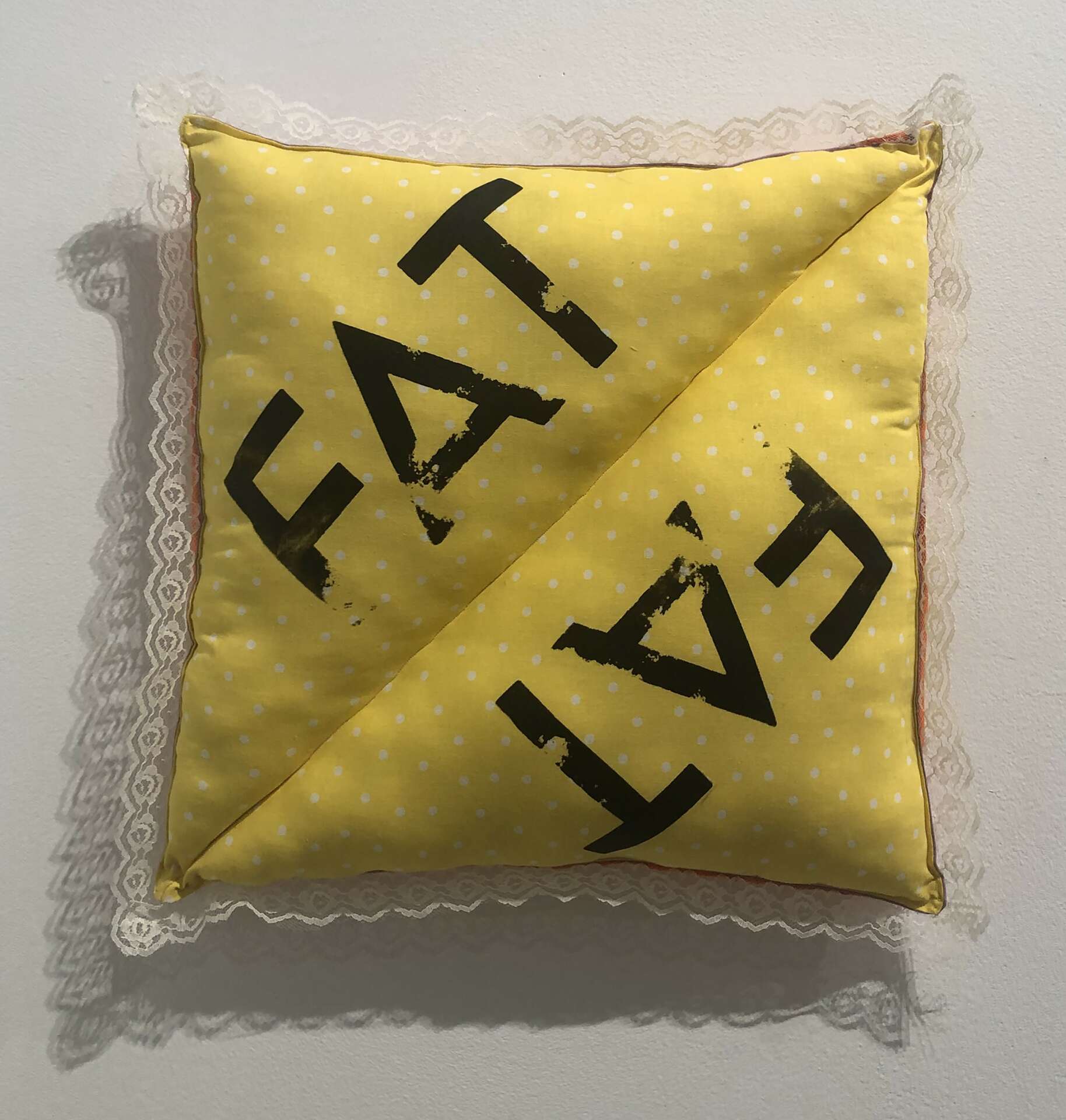
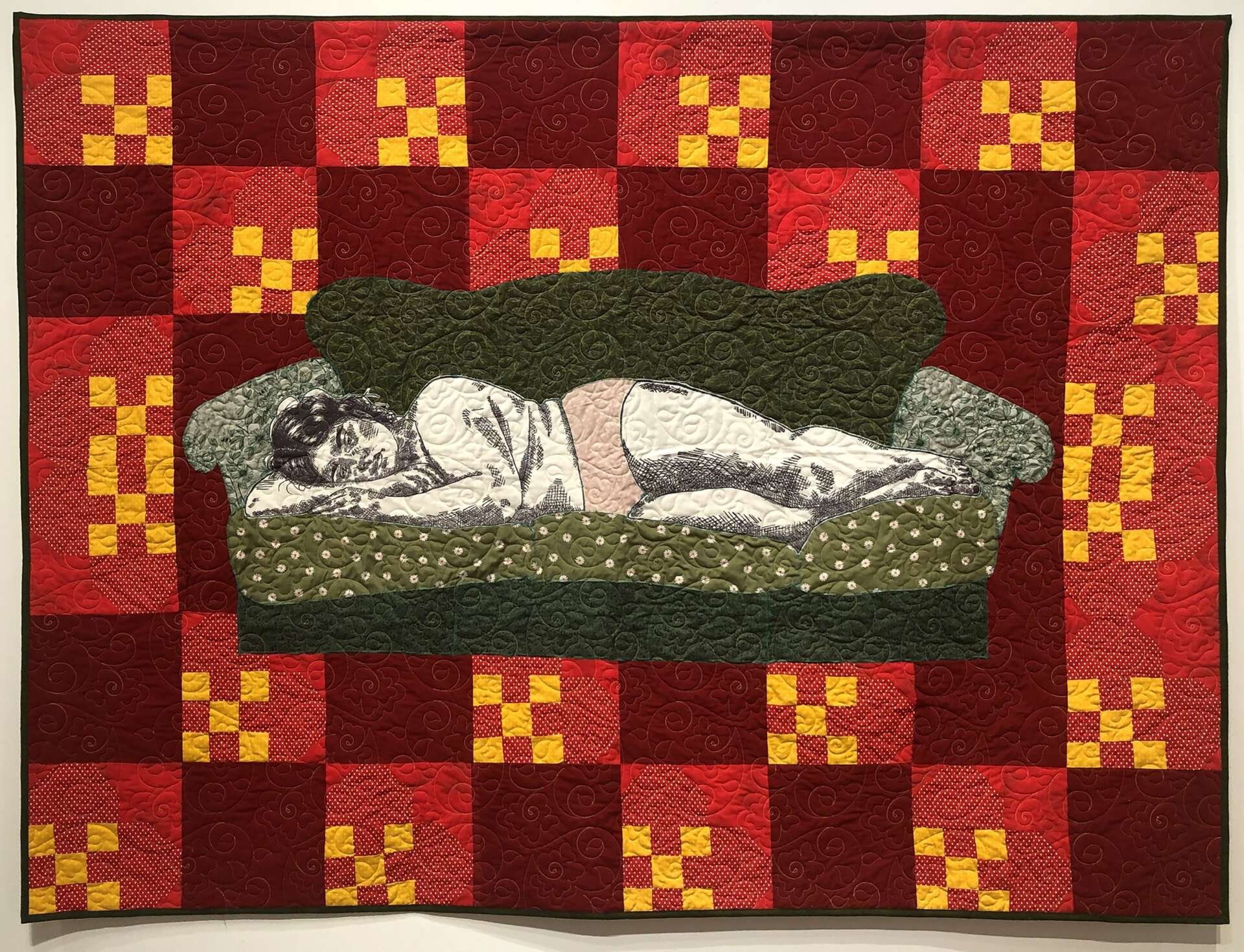
What’s the most rewarding aspect of being a creative in your experience?
Honestly, hearing that my work helped someone feel validated and allowed to exist in their body without shame. I always feel so touched and overwhelmed hearing folks explain how my work showcasing and celebrating bodies like theirs meant something to them. My goal is always to create solidarity and comfort, a sense that we aren’t alone and that you don’t have to live in a negative light. Everyone else’s hate on your body is not your problem and you owe them nothing! Fat people exist and we aren’t going anywhere.
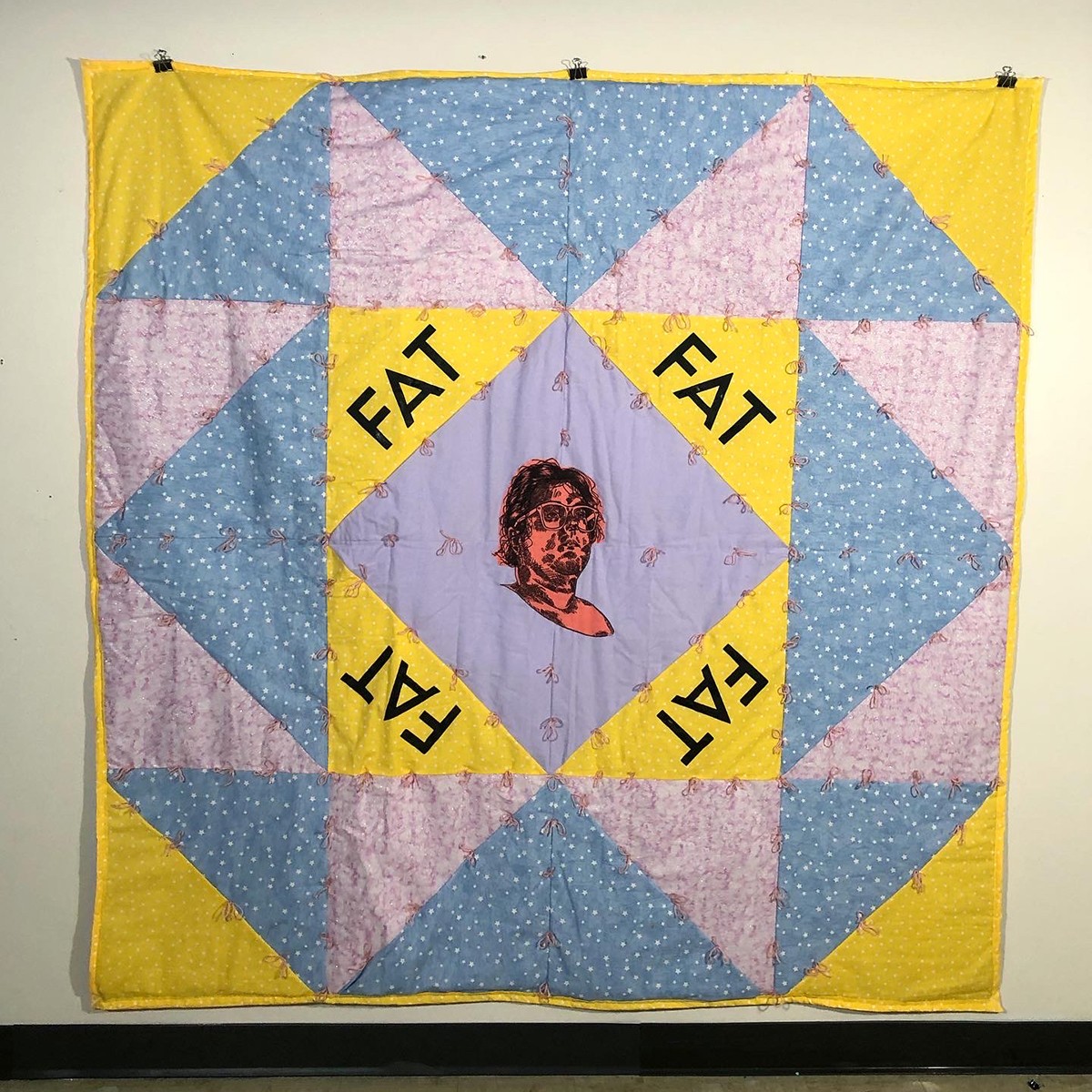
Contact Info:
- Website: stephaniealaniz.com
- Instagram: @bavarianbaby


